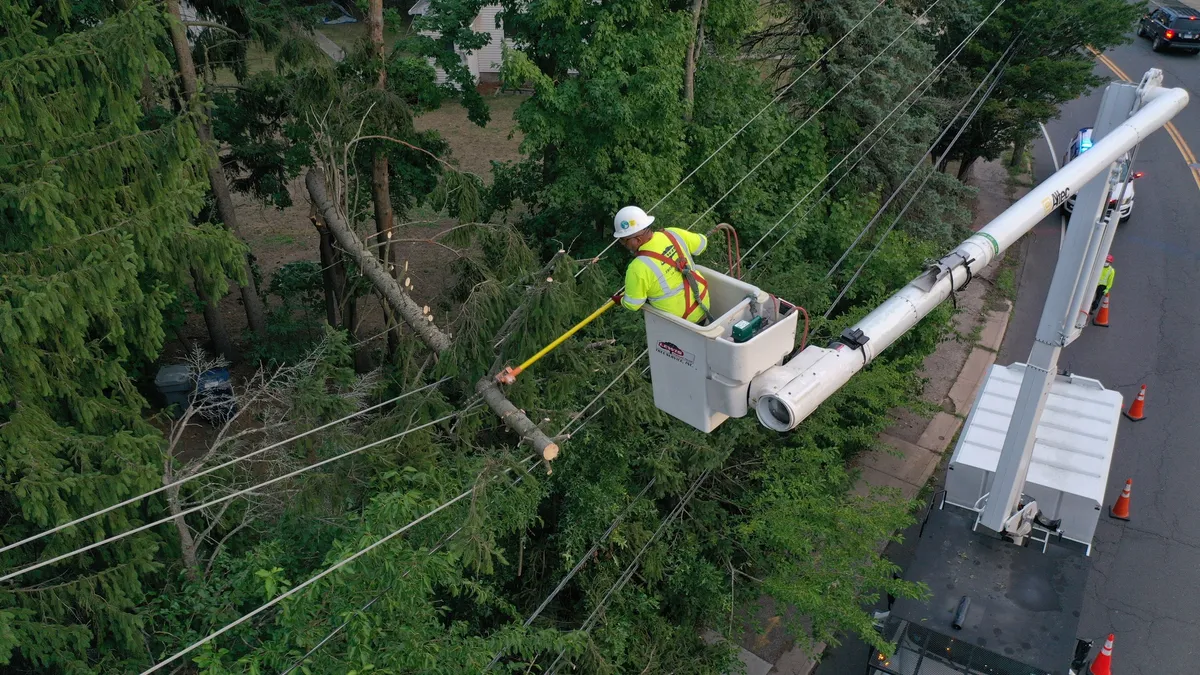Severe storms often bring last-minute surprises. When Hurricane Laura made landfall in southwestern Louisiana in late August 2020, it brought less flooding than expected, but far more wind. With sustained winds of up to 150 miles per hour, the Category 4 hurricane uprooted many large trees, causing 130,000 power outages across the state.
Reporting from the town of Iowa, Louisiana on August 28, 2020, Wade Goodwyn of National Public Radio described the devastation. "Everything is ripped up," he said. "Most of the damage was caused by huge falling trees. Those trees didn't just snap power lines — entire poles were snapped, they were swinging and hanging."
For utility operations, the "new normal" has become constant change with more disruption. Many utilities are struggling to adapt, especially when it comes to optimizing long standing practices such as tree trimming.
Precise, timely, data-driven insights can help utilities manage more disruption, enhancing grid resilience while minimizing outages and accelerating recovery. New digital tools combine detailed, near-real-time data about vegetation and weather conditions with artificial intelligence (AI). This can help utilities become more proactive, precise and effective about how they target and plan tree-trimming activities, both on a routine basis and in preparation for approaching storms.
"The number one cause of unplanned outages is trees making contact with powerlines, especially during bad weather, said Robbie Berglund, Weather Solutions Global Business Unit Executive for IBM Energy & Utilities. "IBM's breakthrough is that we automatically gather detailed data about trees in a utility service area and scan that into a vegetation model. Data from the vegetation model then gets fed into an outage model, along with highly granular weather data from our business, The Weather Company. IBM artificial intelligence algorithms extract from those models' specific predictions of where trees are most likely to cause outages."
Increasingly severe weather isn't the only disaster utilities must navigate. The COVID-19 pandemic also has significantly impacted how utility personnel work in the field. For instance, the tiring, uncomfortable work of tree trimming can be somewhat more challenging when arborists must wear a face mask, which may restrict breathing more than ordinary safety gear. Also, to support social distancing, many utilities have limited the number of personnel per vehicle, shrinking shrink field crews or increasing truck roll costs. Such operational changes have made the efficiency and precision of tree trimming more critical than ever.
At Eversource in Connecticut, COVID-19 has also complicated and slowed the process for getting state-mandated permission for the utility to trim trees on private property. Alan Carey, Manager of Vegetation Management for Eversource in Connecticut, explained that prior to the pandemic, his team would review the customers on a circuit scheduled for trimming, to plan tree work house-by-house. Utility staff would knock on doors to get permission and leave a permission form hanging on the front doorknob if the customer wasn't home. Customers would sign the form and put it back on the door for the utility to retrieve later.
"Now we have a no-knock, no-hang process," said Carey. "We're calling and emailing customers to discuss the work we want to perform and mailing them paperwork or using DocuSign. It takes more work just to get permission."
During the pandemic, Eversource suspended non-emergency requested tree trimming and has focused efforts on areas where trees pose extra risks. But even though the utility was relatively well-prepared to face severe weather, Connecticut territory was hit especially hard in August 2020 by Tropical Storm Isaias, with a tremendous impact on utility systems exceeding Hurricane Irene or Superstorm Sandy. At the peak of Isaias, power was out for approximately 632,000 Eversource customers in Connecticut, and repairs were needed in over 21,000 locations across the state.
"Every storm is different," said Carey. "We have an emergency group that closely monitors meteorological information. In the days before Isaias, we had crews out there addressing the most hazardous trees. After the storm, we still had to clear nearly 9,000 trees in our state to make restoration. But it could have been worse."
For utilities facing severe ongoing storms, access to detailed data and insight can focus emergency preparations even more tightly. This can better support a utility's own crews and enhance coordination and communication with repair teams coming in from other regions to provide mutual aid after a big storm.
The best preparation to minimize outages is to systematically trim trees year-round. Under normal circumstances, utility plans for tree trimming mostly follow cyclic schedules that change little from year to year. However, climate change is shifting growing seasons, temperatures and weather patterns. Without robust data and insight, it can be challenging for utilities to keep updating their routine trimming schedules to reflect shifting patterns of vegetation growth.
Since the pandemic began, utility customers have become notably sensitive to outages — even brief ones, and not only during storms. In a recent webinar, Josh Langdon, Director of Grid Operations and Reliability for NV Energy, observed: "With so many people working from home now, a power outage of even one hour can be a really big deal. There's a lot of customer angst about any service interruption."
Armed with better data and timely, actionable insights, utilities can better combat disruption to maintain reliability under even the most challenging circumstances – and beyond.
"How we operate during this pandemic is becoming the new normal," said Tim Epp, Senior Manager, Work & Asset Management for Snohomish County PUD, during the same webinar. "What we're learning now will help us handle the next crisis, and the next. Digital technology will be absolutely required not only for increased system visibility and modeling, but also for employee and customer safety."






